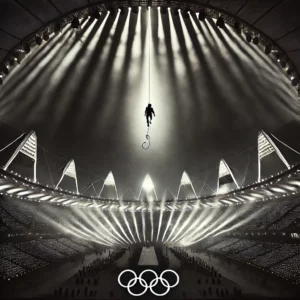The Perseid Meteor Shower is a celestial spectacle that has been mesmerizing stargazers for centuries. This year’s event promises to be one of the most spectacular, with hundreds of meteors expected to stream across the night sky, leaving a trail of glittering stardust in their wake.
Â
When to Witness the Perseid Meteor Shower
The Perseid Meteor Shower is set to peak on the night of August 12-13, 2024, with the best viewing times between midnight and dawn. However, the shower will be active from July 17 to August 24, offering plenty of opportunities to catch a glimpse of this celestial wonder. The peak viewing time is expected to be around 2am on August 13, when the Earth passes through the densest part of the meteoroid stream.
Where to Watch the Perseid Meteor Shower
The Perseid Meteor Shower will be visible from anywhere in the Northern Hemisphere, with the best views from locations with minimal light pollution. Find a dark spot away from city lights, and get ready to witness the magic of the night sky. Some of the best locations for viewing the meteor shower include:
National parks
Remote areas with minimal light pollution
Dark-sky preserves
Astronomy clubs and observatories
Tips for Viewing the Perseid Meteor Shower
Dress warmly and bring a blanket to stay comfortable during the late-night viewing.
Bring binoculars or a telescope to get a closer look at the meteors.
Download a stargazing app to help you navigate the night sky and identify constellations.
Be patient and enjoy the show! It may take some time for your eyes to adjust to the dark, but the wait will be worth it.
What to Expect
The Perseid Meteor Shower is expected to produce up to 50 meteors per hour at its peak, with some of them potentially leaving behind bright trails of stardust. The meteors will appear to radiate from the constellation Perseus, which will be visible in the northeastern sky. The shower will also feature some brighter meteors, known as fireballs, which will be visible for a longer duration.
Upcoming meteor showers for 2024:
Draconid Meteor Shower: October 7-8, 2024: Peak viewing time: 2am on October 8: Expected rate: 10-20 meteors per hour
Orionid Meteor Shower: October 21-22, 2024: Peak viewing time: 2am on October 22: Expected rate: 20 meteors per hour
Southern Taurid Meteor Shower: November 4-5, 2024: Peak viewing time: 2am on November 5
Expected rate: 10-15 meteors per hour
Northern Taurid Meteor Shower: November 11-12, 2024: Peak viewing time: 2am on November 12
Expected rate: 10-15 meteors per hour
Leonid Meteor Shower: November 17-18, 2024: Peak viewing time: 2am on November 18
Expected rate: 10 meteors per hour
Geminid Meteor Shower: December 13-14, 2024: Peak viewing time: 2am on December 14
Expected rate: 100 meteors per hour (one of the highest rates of the year!)
Ursid Meteor Shower: December 21-22, 2024: Peak viewing time: 2am on December 22
Expected rate: 10 meteors per hour
It’s always a good idea to check the weather forecast and moon phase before heading out to view a meteor shower, as clear skies and a new moon can make for optimal viewing conditions.
The Perseid Meteor Shower is a celestial event not to be missed. With hundreds of meteors streaming across the night sky, this spectacular show is sure to leave you in awe. Mark your calendars, grab a blanket, and get ready to witness one of the most anticipated celestial events of the year!












